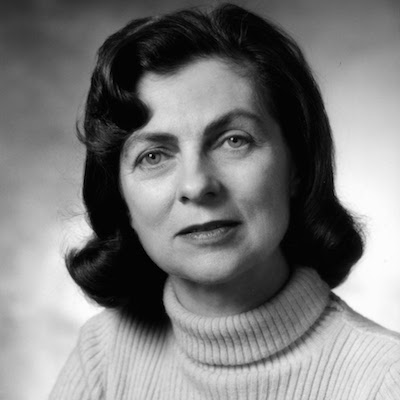Anne McLaren was a scientist who was a pivotal figure in the evolution of biology. Anne McLaren’s work in vitro fertilization contributed to the development of humanity.
Table of Contents
Wiki, Bio, Age, Family, Siblings, Childhood & Education
Dame Anne McLaren Dorinthea was born in London, England on April 26, 1927. Her father’s name is Sir Henry McLaren, while her mother’s name is unknown. Christabel Mary Melville MacNaghten’s father was a former Liberal MP. As a kid, she starred in the 1936 film Things to Come.
She also studied zoology at Lady Margaret Hall. Later, Haldane got an MA in Researching Drosophila Mote Infestation under J.B.S. Haldane. Similarly, she pursued postgraduate studies at University College London. She received her DPhil in 1952.
Death
She was killed on the M11 motorway on July 7, 2007, at the age of 80. She and Michie took the train from Cambridge to London.
Anne McLaren’s Height, Weight, and Body Dimensions
Anne McLaren has not shared any information regarding her body measurements. The scientist, on the other hand, had brown hair and blue eyes.

Anne McLaren’s Profession & Career
McLaren and Donald Michie worked as a couple at University College London from 1952 to 1955. They later worked together at the Royal Veterinary College. As a result, she later pursues studies on mouse fertility, including super pregnancy and superovulation.
In 1958, she co-authored a seminal Nature study with John D. Biggers. As a result, she announced the first successful development and birth of mouse embryos. Furthermore, it was isolated for the first time from spontaneously fertilized females at the 8–16 cell stage.
They published a paper titled Successful Development and Birth of Mice Cultured in Vitro as Early Embryos. She then transferred to the University of Edinburgh’s Institute of Animal Genetics to continue her studies. She became an outspoken supporter of government childcare help. As a result, it was owing to my experience as a single career parent raising children.
She worked at the Institute of Animal Genetics for the next 15 years, from 1959 to 1974. She studied a range of issues at university, including fertility, epigenetics, and development. She then investigated the evolution of mouse embryonic transfer, immunocontraception, and the skeletal properties of chimaera.
In 1974, she left Edinburgh to become Director of the MRC Mammalian Development Unit in London. Similarly, she left the Unit in 1992 and relocated to Cambridge. She also worked at the Wellcome/CRC Institute and, later, the Gurdon Institute. As a result, she was elected a Fellow-Commoner of Christ’s College, Cambridge, in 1991.
She was also a member of the committee formed to investigate in vitro fertilization (IVF) and embryology technologies. It later produced the Warnock Report. Similarly, she served on the Nuffield Council on Bioethics from 1991 to 2000.
She was also one of the co-founders of the Frozen Ark project in 2004. Bryan and Ann Clarke, her husband and wife, were her coworkers. Thus, the project’s major goal was to “save the DNA and viable cells of the world’s endangered species.” She was also a member of the Communist Party of Great Britain.
She also served as Foreign Secretary of the Royal Society from 1991 to 1996. She held the role of Vice-President from 1992 until 1996. As a result, she was the first female officer in society’s 330-year history. She was also elected a Fellow of the Royal College of Obstetricians and Gynaecologists in 1986. It was in recognition of her groundbreaking fertility research. In 1989, she delivered the Ellison-Cliffe Lecture to the Royal Society of Medicine.
In addition, from 1990 to 1995, she was the Fullerian Professor of Physiology at the Royal Institution. As a result, she established a DBE in 1993. She was president of the British Association for the Advancement of Science from 1993 to 1994. In 1998, she was named a Fellow of the Academy of Medical Sciences.
As a result, she shared the Japan Prize with Andrzej K. Tarkowski in 2002. And it was in recognition of their contributions to developmental biology. Similarly, in 2007, she received the March of Dimes Prize in Developmental Biology.
Anne McLaren’s Husband, Marriage & Relationship
Anne McLaren married Dr Donald Michie on October 6, 1952. They have three children: Susan Michie, Jonathan Michie, and Caroline Michie. From 1952 until 1955, she and her husband were colleagues at university. Unfortunately, their marriage dissolved in 1959. They remained friends, and she raised her children on her own.
Quick Facts
| Full Name | Dame Anne McLaren Dorinthea |
|---|---|
| Born Date | 26 Apr 1927 |
| Age | 95 years old |
| Horoscope | N/A |
| Lucky Number | 4 |
| Lucky Stone | Emerald |
| Lucky Color | Green |
| Best Match for Marriage | Virgo, Cancer, Capricorn |
| Death Date | July 7, 2007 |
| Gender | Female |
| Profession | Scientist |
| Country | England |
| Marital Status | divorce |
| Divorce | Dr. Donald Michie |
| Eye Color | blue |
| Hair Color | brown |
| Birth Place | London |
| Nationality | American |
| Education | University College London |
| Father | Henry McLaren |
| Kids | (3)Susan Michie, Jonathan Michie, Caroline Michie |
| Wiki | Dame Anne McLaren Dorinthea Wiki |
| Brands | N/A |
| Hobbies | N/A |

